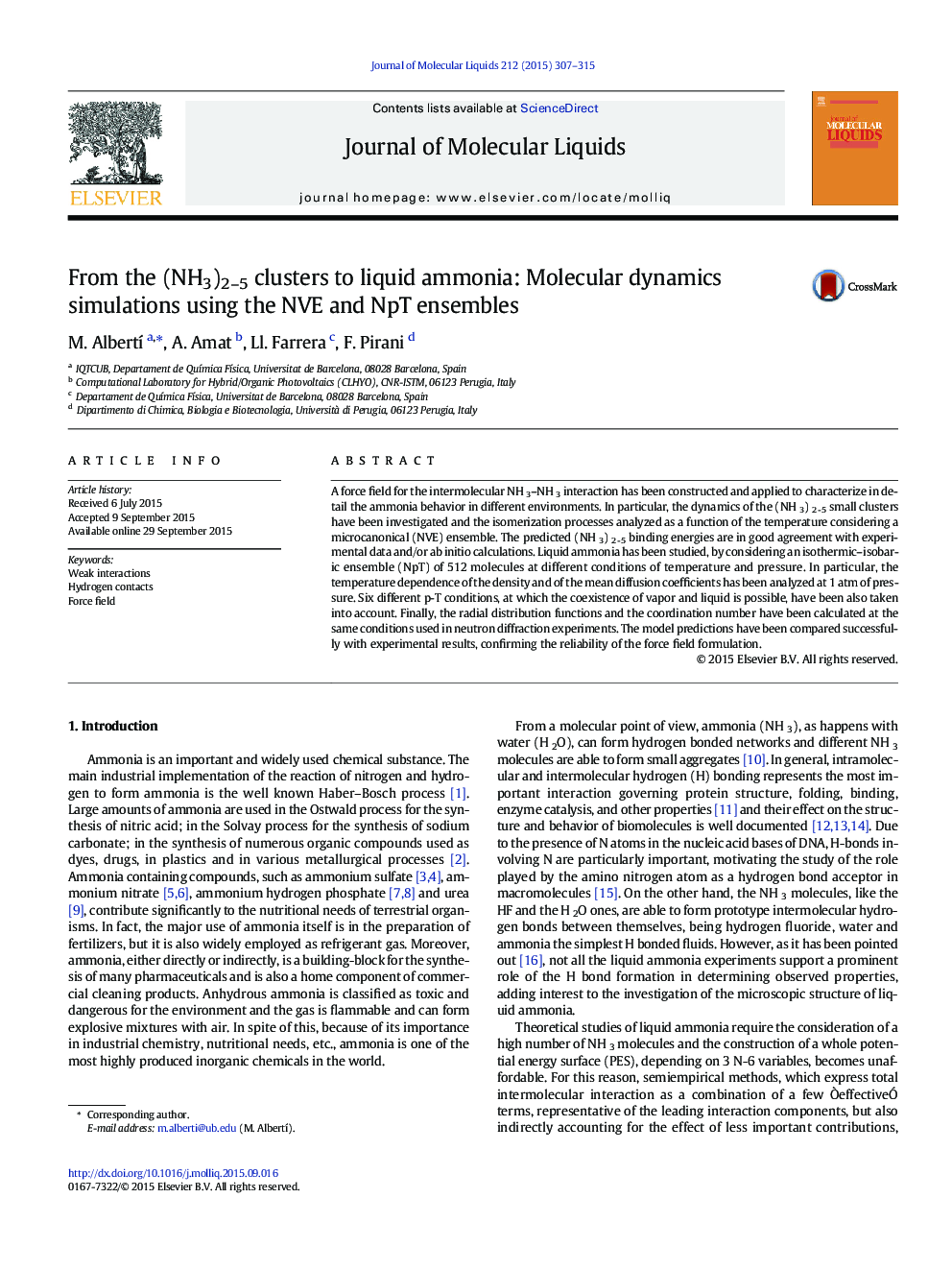| Article ID | Journal | Published Year | Pages | File Type |
|---|---|---|---|---|
| 5410534 | Journal of Molecular Liquids | 2015 | 9 Pages |
â¢The same relevant parameters of the potential function have been used to investigate small clusters and liquid ammonia.â¢Polarization effects due to the increase of monomers have been considered increasing the dipole moment of the monomer.â¢MD simulations were performed to investigate both small clusters and liquid ammoniaâ¢The (NH3)2-5 binding energies were estimated using a NVE ensemble of particles and performing simulations at low temperatures.â¢Structural properties of liquid ammonia were determined from MD simulations using a NpT ensemble.
A force field for the intermolecular NHÂ 3-NHÂ 3 interaction has been constructed and applied to characterize in detail the ammonia behavior in different environments. In particular, the dynamics of the (NHÂ 3)Â 2Â -Â 5 small clusters have been investigated and the isomerization processes analyzed as a function of the temperature considering a microcanonical (NVE) ensemble. The predicted (NHÂ 3)Â 2Â -Â 5 binding energies are in good agreement with experimental data and/or ab initio calculations. Liquid ammonia has been studied, by considering an isothermic-isobaric ensemble (NpT) of 512 molecules at different conditions of temperature and pressure. In particular, the temperature dependence of the density and of the mean diffusion coefficients has been analyzed at 1Â atm of pressure. Six different p-T conditions, at which the coexistence of vapor and liquid is possible, have been also taken into account. Finally, the radial distribution functions and the coordination number have been calculated at the same conditions used in neutron diffraction experiments. The model predictions have been compared successfully with experimental results, confirming the reliability of the force field formulation.
